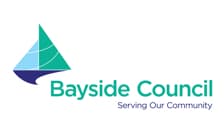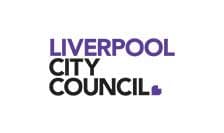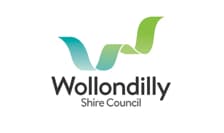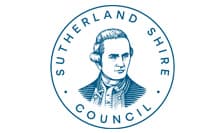WSUD treats stormwater as a resource
Stormwater can be used productively, rather than as a nuisance that must be drained away from urban areas as quickly as possible. This is particularly important in Australia, where we experience extended periods with no rain. It makes no sense to treat life-sustaining water as a nuisance!
However, before exploring WSUD as the solution to stormwater pollution and its benefits, there is a need to explain the problem. When we talk about stormwater pollution there are two aspects that must be considered: quality and quantity.
Quality
In natural forested environments, most rainwater falls to the ground and is absorbed into soft soils, used by plants, or evaporates into the atmosphere. This reduces the amount of water that accumulates on the ground and runs off, entering streams and rivers. Plus, this process provides fantastic natural filtration of water and improves the quality of the water. Conversely, in urban areas most rainwater falls onto hard surfaces (e.g. roofs, roads, paths) and runs off the hard surface, without filtration, into stormwater drains. Without filtration, the quality of the water can be poor. Stormwater flows down drains before it enters our natural waterways, untreated. Many people believe that stormwater flows down drains to a wastewater treatment plants (like our sewage does). In some countries it does, but not in Australia.
Stormwater pollution can include oils, detergents and tyre residue that runs off roads; fertilisers, pesticides and lawn clippings that run off lawns and gardens; sediment that runs off poorly maintained construction sites; gross pollutants from litter; and, any other pollutants that are thoughtlessly disposed of down outdoor drains. Water flowing through stormwater systems picks up further pollutants that have dissolved from the concrete.
Quantity
The second aspect of stormwater pollution is quantity, meaning the amount or volume of stormwater. Urban areas are often designed for the fast removal of stormwater to prevent flooding and protect infrastructure, conveying the stormwater out of the area as quickly as possible. During storms in urban areas that don’t have WSUD, large volumes of polluted water runoff to natural waterways, causing wasting of water, flash flooding, erosion, waterway pollution, lost biodiversity and lost recreational opportunities.
Over 90% of pollutants that enter the Georges River are carried by stormwater.
WSUD benefits
WSUD targets these two problematic aspects of stormwater (quality and quantity), and aims to improve the ability to capture, treat and productively use stormwater before it pollutes natural waterways. WSUD reduces the amount of water that needs to be supplied by water utilities. WSUD also provides wildlife habitat, public open space, recreational opportunities and visual amenity. WSUD can reduce the need for stormwater drainage infrastructure, such as large and ugly concrete channels. WSUD works best when stormwater is captured close to where it fell from the sky, before allowing it to build to large volumes with lots of pollutants. To be most effective, WSUD requires good planning and good engineering, and most importantly, appropriate maintenance at the right times.
Water Sensitive Urban Design features in the urban environment.
Examples of WSUD that can be used for different purposes, depending upon other uses of the landscape in which it is placed, include rainwater tanks, porous pavements, raingardens, green roofs, bioretention systems, swales, constructed wetlands and stormwater harvesting systems.
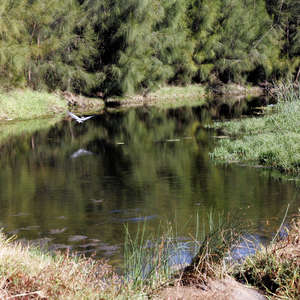
WSUD examples
WSUD devices for your home and garden include: Rainwater tanks, raingardens, porous pavements for driveways and walking paths (use gravel or grass). These features will help to harvest water and reduce pollutants entering the Georges River.
The function of rainwater tanks is easy to understand. Water running off roofs is captured, so that it can be used to water gardens and lawns between storms. The premise of porous pavements is also simple: during storms they allow water to seep through gaps and be naturally filtered as described above, rather than running off hard surfaces and into the stormwater drains.
Raingardens are designed in a way that directs stormwater runoff through layers of soil, sand and gravel for filtration – simulating natural filtration. Above these layers, plants are grown to take up much of the water and the nutrients in the water, as excessive nutrients are a major pollutant of urban waterways. Raingardens are self-watering and low maintenance.
Green roofs are just a collection of raingardens that use the otherwise under-utilised area on roofs. They are often employed on flat roofs in densely populated cities, where there is little space left between buildings for plants to grow.
Bioretention systems and swales, consisting of a soil bed planted with suitable non-invasive (preferably native) vegetation, act to slow down stormwater flows to allow sediment and other contaminants to settle out and be processed, whilst some water infiltrates underlying soils and becomes groundwater.
Most stormwater is processed under the ground, however, in constructed wetlands, stormwater is collected above ground. This still slows down water to allow time for processing of contaminants. But, it also allows for the establishment of wetland ecosystems, which further help to process stormwater and add to the amenity of urban landscapes. As wetlands are valued by many of people, introduction of constructed wetlands can also improve property prices in surrounding areas.
Stormwater harvesting is the collection, treatment and storing of stormwater from drains or receiving streams for productive usages. For example, stormwater can be used to water extensive areas of playing fields and parks. Such watering would otherwise consume large volumes of water from water utilities that is treated to be drinkable, which is far in excess of the treatment required for watering grass.


